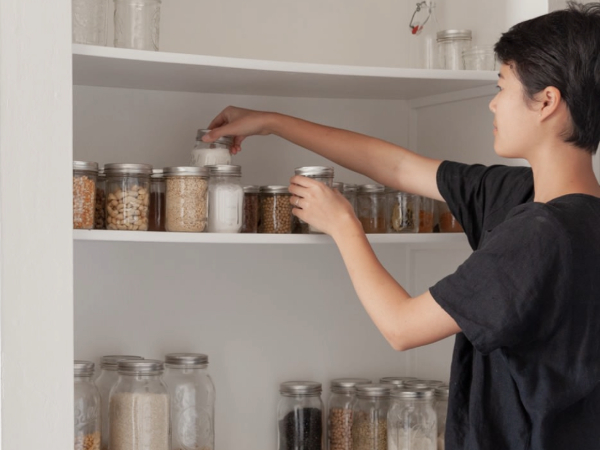
In her book, Sustainable Home: Practical Projects, Tips and Advice for Maintaining a More Eco-Friendly Household (White Lion Publishing, 160 pages), Christine Liu invites the reader to join her on her rewarding yet “complex journey of continuous learning, investigation, and problem solving.” A cohesive presentation of concepts from her blog, the book leads the reader through their living room, kitchen, bedroom, and bathroom, providing the rationale, general advice, and specific projects that guide the author’s efforts at sustainable living.
A “lifestyle of greater intentionality and simplicity has led to personal growth and fulfillment in my everyday actions,” writes Liu. She definitely “walks the walk” and helps her readers live a sustainable lifestyle, too.
Room by Room
Liu uses the first chapter on the living room to introduce concepts appropriately applied to every part of the house and facts to support her justification for seeking a sustainable lifestyle. She begins with a summary of minimalism and decluttering. Her mastery of the subject is evident as it takes her six pages to convey the essence of a popular genre that has propelled the publication of thousands of pages and dozens of books in recent years. The impact of fossil fuels and energy use is also discussed here. In this section, the author orders renewable energy options regarding their environmental impacts. While much of the book may not contain new information for the environmentally informed, there is this interesting tidbit: “… a medium size fridge uses 322 kWh a year, and a mobile phone uses 361 kWh a year — due to background activities such as data streaming and sharing.” This chapter also includes sections on furniture choices and the use of indoor plants to improve the in-home environment. These bring the first two “Make Your Own” projects, a planter box and a terrarium constructed from recycled materials. This hands-on aspect of the book becomes more prominent in the remaining rooms.
In the kitchen, Liu extols the benefits of sustainably and locally produced, plant-based food for both the environment and the consumer. She also covers food waste, composting, and packaging waste. With seven more projects, this chapter marks a change in the book’s tone and the reader’s experience. The perspective on each subject still starts a mile high with the “why” question, but considerably more time is spent down low focused on the “how.” It is also more personal, as represented in the author’s recipes. She must find particular satisfaction in making her black bean burgers, almond milk, oat milk, and sweet pickled vegetables, as those survive her curation process and remain in the book. She ends the chapter with her self-proclaimed favorite recipe, one-pot lentil curry. “I love simple, convenient meals which can be cooked in a pot, appreciate how it saves energy, and sincerely enjoy a hot pot of curry on a cold day,” she writes.
In the bedroom, minimalism is again discussed, especially regarding the closet and as it pertains to the wardrobe. After establishing the downside of fast fashion, Liu dives into creating a capsule wardrobe and the virtues of natural fibers, less frequent laundering, cold water washing, and line drying. All are presented simply and concisely. A fun surprise is the clothing repair project where she freshens the dark color of some black jeans using dye made with water left over from softening black beans, a nice tie-in to the homemade black bean burger recipe from the kitchen chapter. After sections on sleep and ecologically sensitive choices in bedding and mattresses, the chapter concludes with a recipe for homemade room spray.
That is an excellent transition to the bathroom chapter of the book, where Liu shares recipes for producing personal care products, like toothpaste, skin repair gel, skin cleansing scrub, body butter, lip balm, and hair rinse. After a side trip to the plastic-free benefits of safety razors, she plunges into water conservation. She wraps up the chapter by discussing the replacement of harsh chemical cleansers with inexpensive and readily available household products, such as vinegar and baking soda.
Environmental impacts at work, dining out, and getting around each have extremely brief chapters. Finally, the author gives a one-page primer on personal environmental activism.
The author’s background in packaging design is evident throughout the book. Elegantly illustrated with a hardcover and high-quality paper, the book offers information in short, topical bursts, and it need not be read cover to cover to be thoroughly enjoyed. It has the look and feel of a coffee table book meant to inspire conversation or pass the time. Sustainable Home is an excellent place for someone to begin understanding how everyday individual choices measurably impact the environment.
You can also follow Christine Liu on social media. For all the links, visit Simplybychristine.com.
Image courtesy of Christine Liu.
